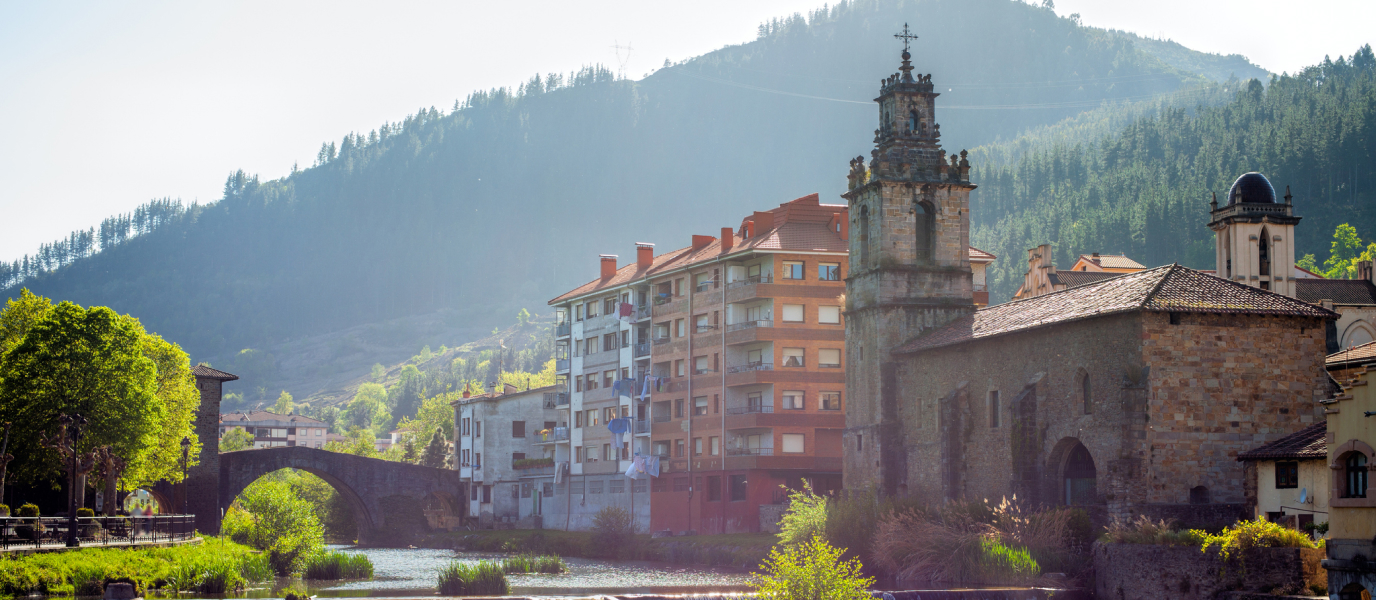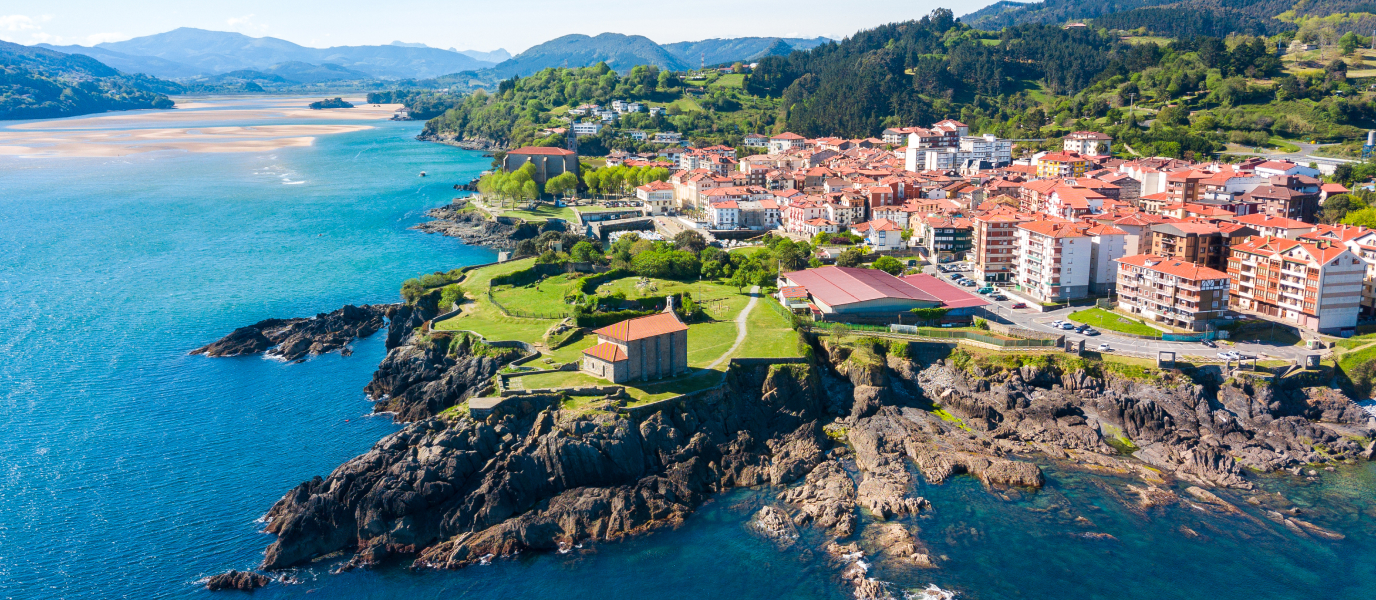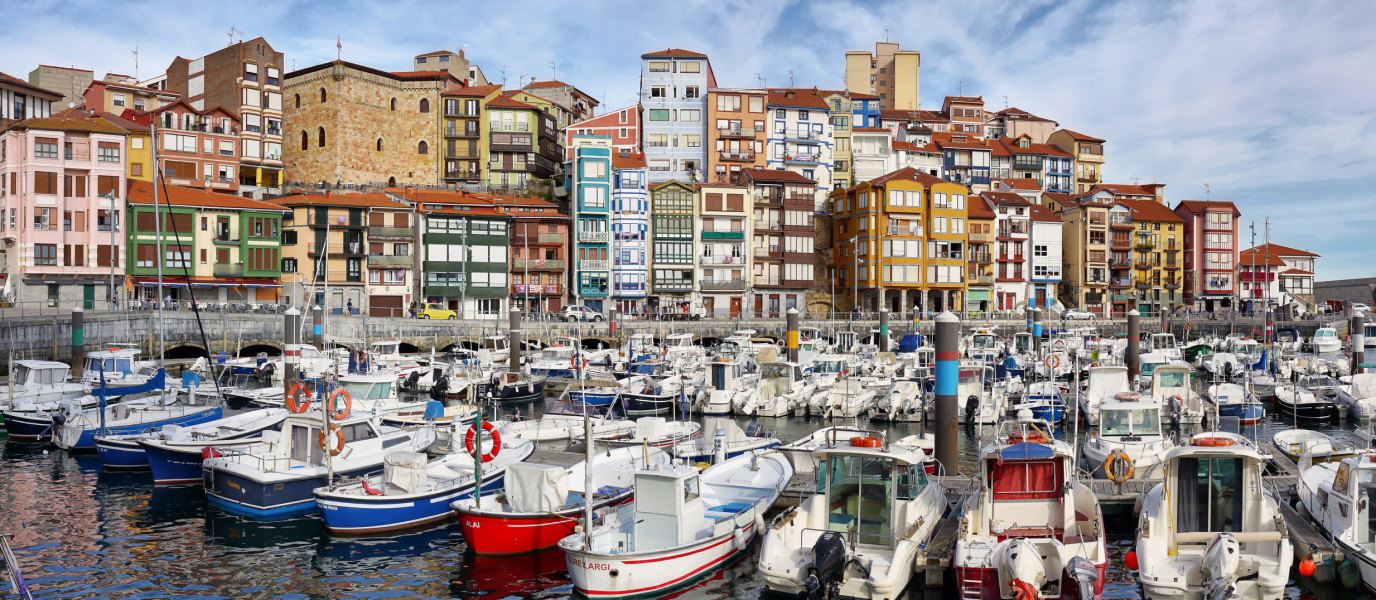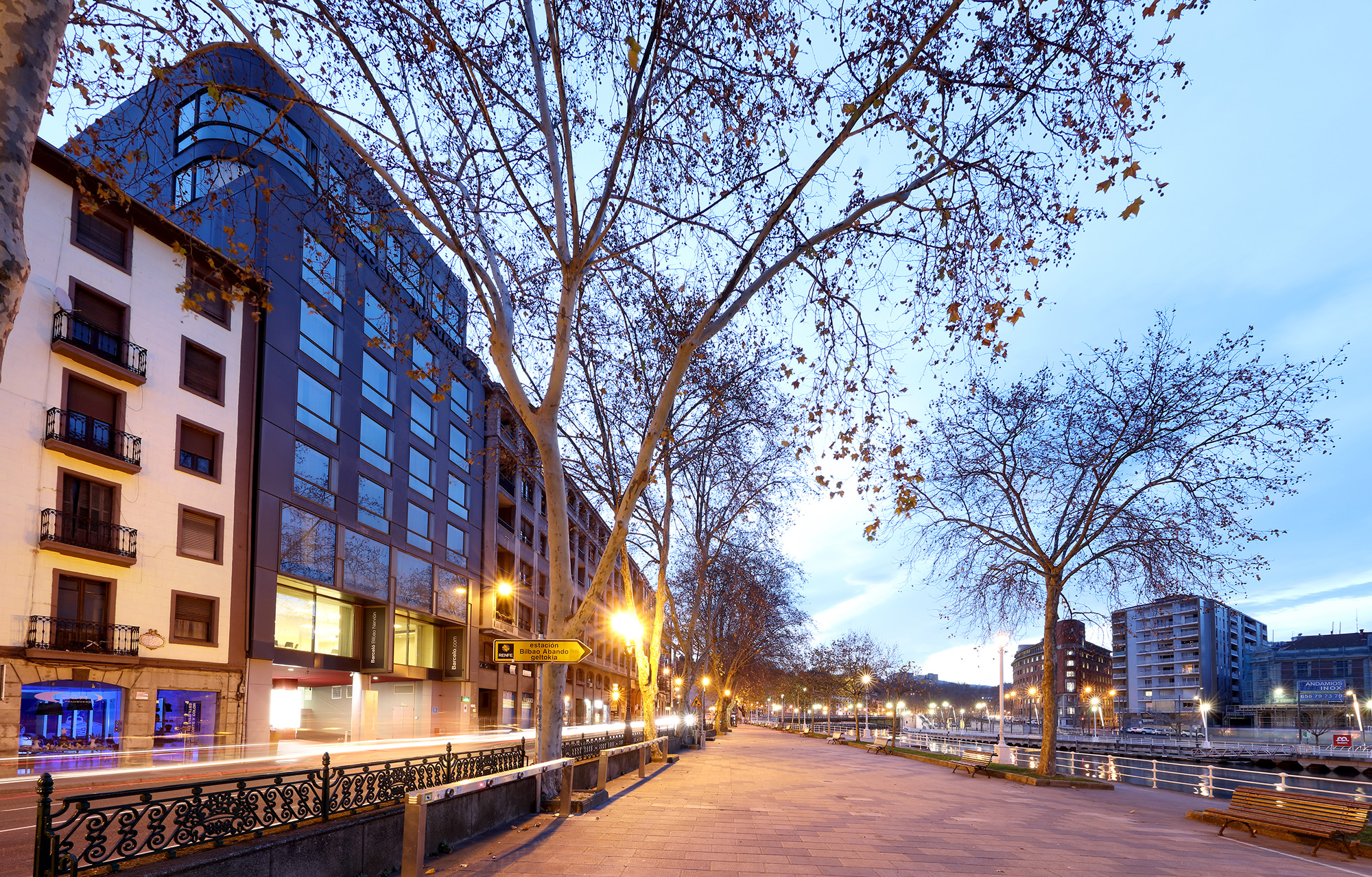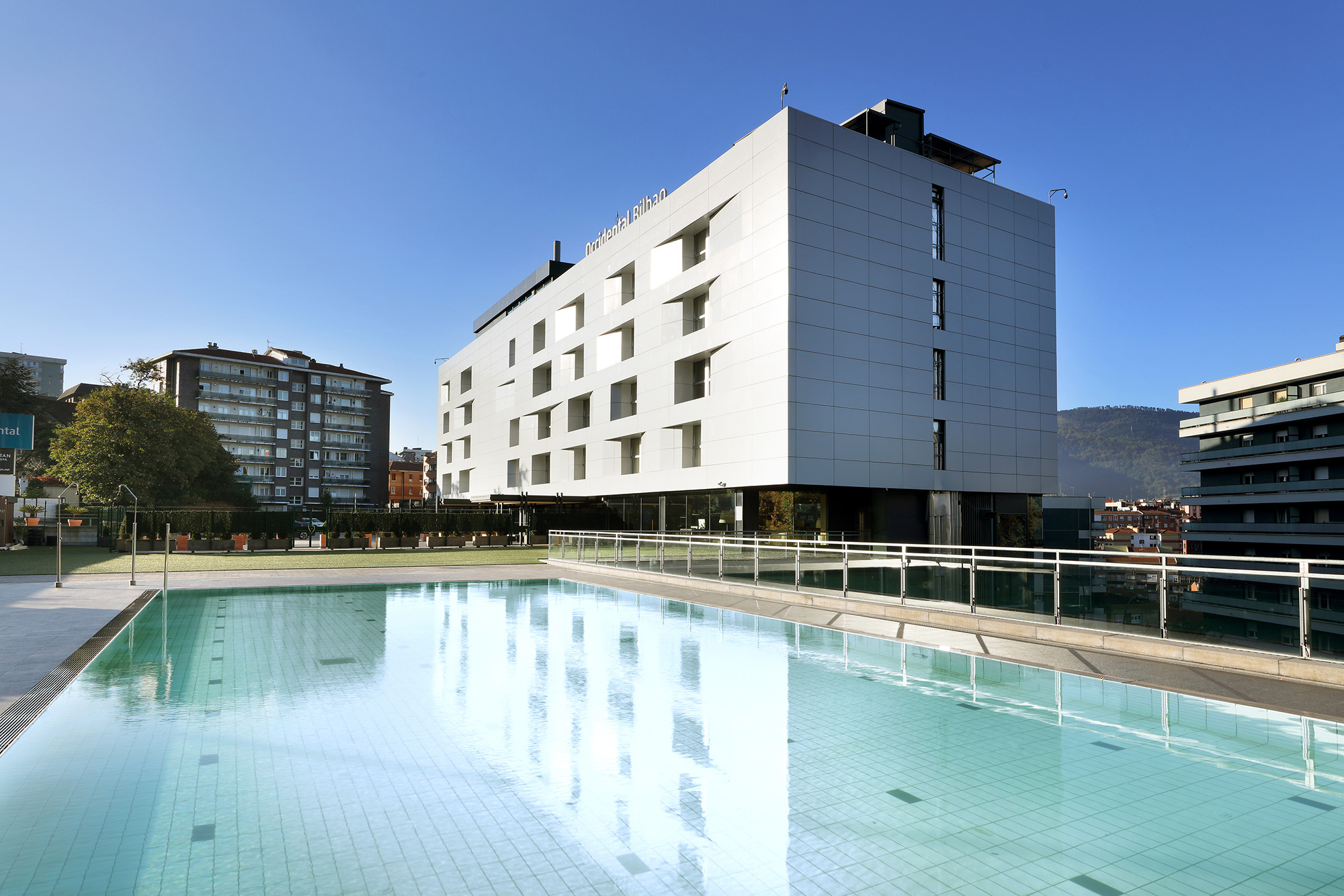With over eight centuries of history as the capital of the province of Álava, and as the seat of the Basque Country’s government and parliament, this is a city that has successfully balanced, as few others have, its profound historic roots with the most innovative thinking to design and build a promising future.
To visit Vitoria-Gasteiz is to enjoy both a priceless collection of historic, artistic and cultural treasures as well as a city that has made a firm commitment to sustainability and quality of life. This focus earned it, in 2012, the title of European Green Capital, and has enabled it to obtain international Biosphere Responsible Tourism certification as a sustainable tourism destination.
This city is a veritable delight for the senses, from the Almendra Medieval and the Gothic cathedral of Santa María to the Anillo Verde [Green Belt] and the parks of Zabalgana, Salburua, Olarizu and Armentia, by way of an outstanding gastronomic tradition based on the finest products of the land, as well as an exciting artistic and cultural calendar.
- The history and development of the city, “Europe’s warehouse”
- Vitoria’s not-to-be-missed attractions
- Where to eat in Vitoria-Gasteiz
- Museums in Vitoria-Gasteiz
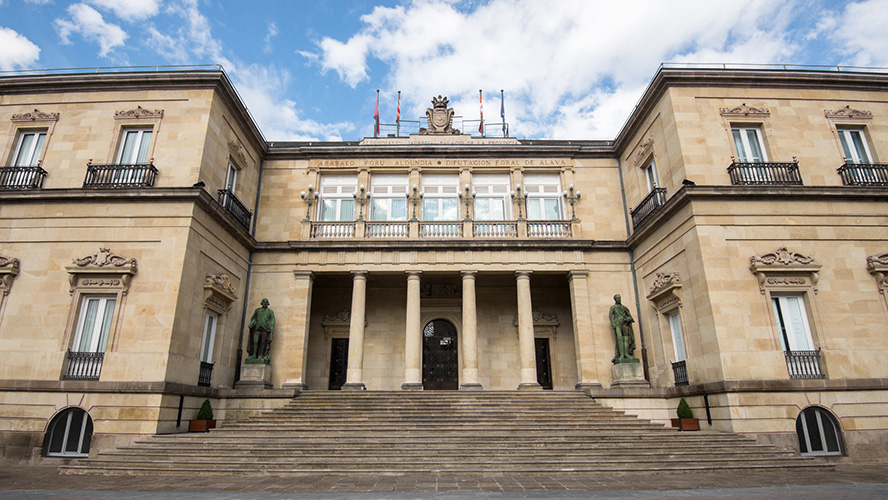
The history and development of the city known as “Europe’s warehouse”
It was in 1181 that King Sancho VI of Navarre conquered what was then a little village known as Gasteiz. And although there is no doubt that other peoples and civilisations had settled in the area far earlier (as demonstrated by vestiges of the Roman occupation, for example), this particular moment during the Reconquest is considered to be the date when the city of Vitoria was founded.
As the Middle Ages wore on, Vitoria passed from Navarre into the hands of Castile. In the centuries that followed, the city prospered greatly, thanks to the fact that it was one of the main trade routes between the rich lands of Castile and northern Europe. In fact, by the late Middle Ages, Vitoria had a customs office, and so many merchants from other nations obtained provisions from its warehouses that the city became known as “the warehouse of Europe”.
Although a degree of decadence crept in due to the expulsion of the Jews in 1492, trading continued until well into the eighteenth century. This was reflected in the construction of beautiful public and private buildings. These included the palaces of Montehermoso, Villasuso and Esocriaza-Esquivel, as well as a great many convents and churches.
In 1813, the battle took place in Vitoria that saw the final defeat of Napoleon’s troops during the War of Independence. Also during the nineteenth century, following the transfer of the customs office to the coast, Vitoria’s main function changed, and it gained a degree of importance from the cultural perspective as it began to offer other kinds of services. So the Ateneo was created (1886), and the Universidad Libre (1869), which encouraged the development of several literary and artistic groups.
Perhaps the outstanding event of the twentieth century was the declaration of Vitoria as the capital of the new Basque autonomous region. In addition, the “green” mission to which both local authorities and the local population became committed, made the city a true model for the development and preservation of the environment.
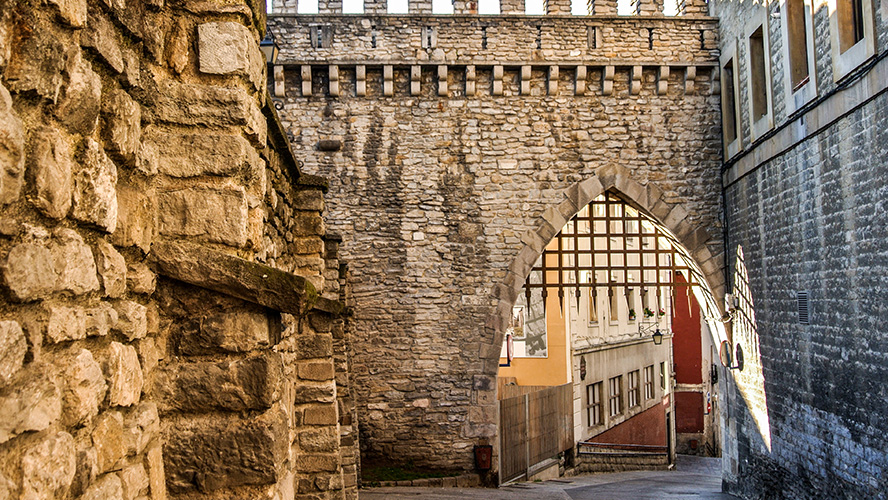
Vitoria’s not-to-be-missed attractions
Ancient churches, charming scenes, markets, mansions and palaces, stunningly beautiful natural landscapes, fascinating museums… Vitoria-Gasteiz has it all. Moreover, it is a city on a human scale. Friendly and calm, it is one of those cities where you can go sightseeing on foot or cycling with no difficulty, discovering all its magic and enjoying all those experiences that, in the final analysis, add meaning to the art of travel.
Vitoria’s Almendra Medieval
The historic quarter, popularly known as the Almendra Medieval [Medieval Almond] thanks to its urban configuration, is one of Vitoria-Gasteiz’s indisputable assets, a veritable open-air museum and a chronicle of the age-old history of the city.
To wander its streets is to set out on an exciting journey through time — this is one of the best-preserved medieval quarters in Spain — to see the city walls, the palaces, towers, and religious edifices; echoes of other times that still resound in every nook and cranny. Make sure you have a good look at the city wall, which dates from the eleventh century, as well as at the Cathedral of Santa Maria, the famous Casa del Cordón and the spectacular palaces scattered throughout the Almendra, (such as the Villa Suso, the Montehermoso and the Escoriaza-Esquivel palaces) — and many other emblematic monuments.
Cathedral of Santa Maria
Designated a UNESCO World Heritage Site, the Cathedral of Santa María, also known as the Catedral Vieja [Old Cathedral], is an impressive Gothic edifice — influenced by various other styles — which dates back over 800 years and is, without doubt, one of the essential attractions of Vitoria-Gasteiz.
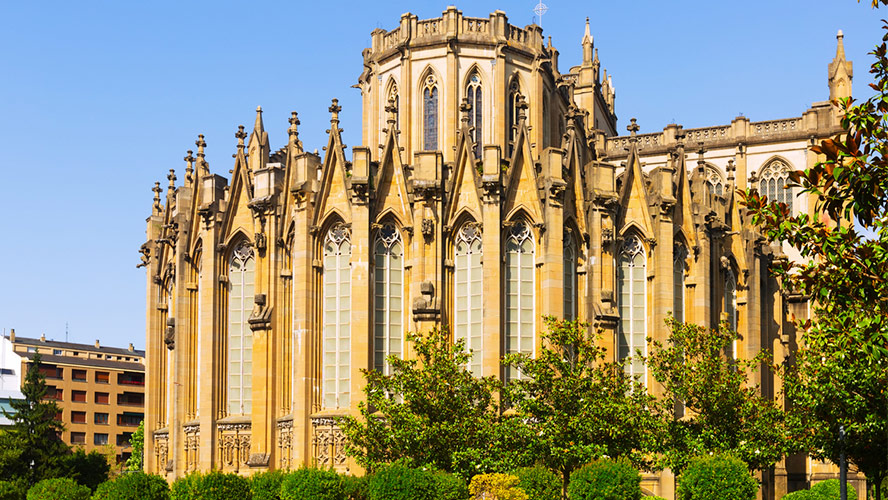
In recent years, after a mammoth process of restoration and structural improvement, the Cathedral of Santa Maria has regained its former splendour. And if such a thing were possible, it has managed to become even more fascinating, thanks to its “Abierto por obras” [“Open for Works”] programme of guided visits, a series of tours that encourages visitors to explore every corner of the cathedral — even the areas where work is being undertaken — from its foundations to the tower (the tallest in the city… with truly wonderful views!). A virtual reality experience to complement the guided tours and the multimedia show “El pórtico de la luz”, which describes the process of transforming one of the country’s most impressive Gothic entrances, are among the many attractions offered by this exceptional building.
Another interesting aspect is that this is the place that inspired the well-known British writer Ken Follet to write A World Without End, the second part of The Pillars of the Earth. It has also featured in works such as A la sombra del templo [In the Shadow of the Church], by the Vitoria-born writer Toti Martínez de Lezea. Aside from all this, it is a breathtaking and inspiring place.
The Plaza de la Virgen Blanca
The true heart of the city, this central square — also known as Plaza Vieja — is another essential visit. Built in the seventeenth century in part of the suburbs that lay outside the city walls, it is the junction for various streets of the Historic Quarter and the Ensanche, making it a point of connection between the old city and the nineteenth-century extension that developed towards the south. In addition to its significance as an urban reference point, it is here that, during the city’s festival (4th – 9th of August) that the famous “bajada de Celedón” [the ceremonial lowering of a figure representing the province’s peasants] takes place.
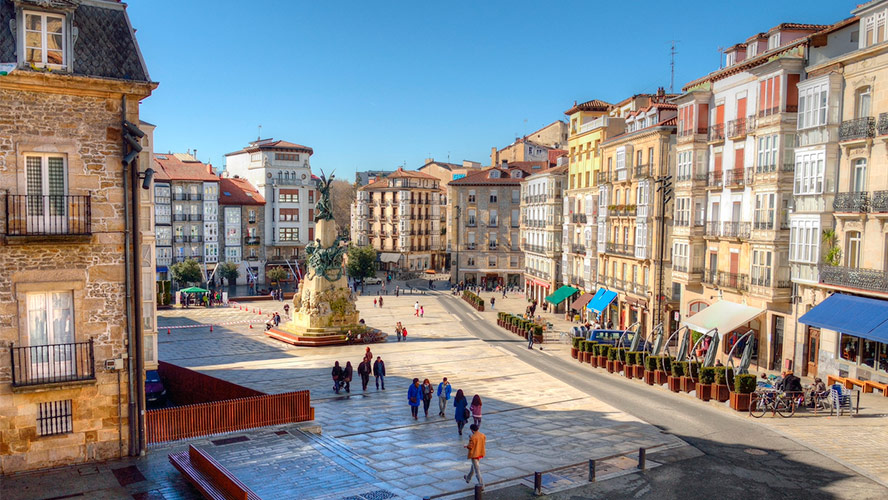
Close to the monument of the famous Battle of Vitoria, in the Plaza de la Virgen Blanca, you will also find the church of San Miguel — make sure you go up to the balcony to get a better view of the square — as well as various bars and restaurants with lively terraces that will tempt you to discover and enjoy the exceptional local gastronomy. And don’t forget to take the obligatory selfie in front of the plant sculpture with the name of the city… an absolute classic!
The Plaza del Machete
Another remarkable spot within Vitoria-Gasteiz’s Almendra Medieval is this old square that lies to one side of the Church of San Miguel, between Los Arquillos [little arches], the Palace of Villa Suso, and the Parish Church of San Vicente Mártir. This was once the southern boundary of the historic quarter, or Casco Antiguo, and is now the point of connection between it and the Ensanche. Its main claim to fame, however, is that in the apse of San Miguel, which overlooks the square, there is a niche where the machete was kept, over which the city’s representatives were sworn into office.
Nowadays, visitors can read the plaque that explains the importance of this corner of Vitoria-Gasteiz, and see a replica of that famous machete. While you are there, you shouldn’t miss the imposing Palacio de Villa Suso, a striking, sixteenth-century edifice whose construction was adapted to the slope of the square, and to the line of the old city wall, which it was built to follow.
The Plaza del Machete is also the scene of picturesque street markets and fairs, and several restaurants and taverns offer their services in the square itself and in the area around it.
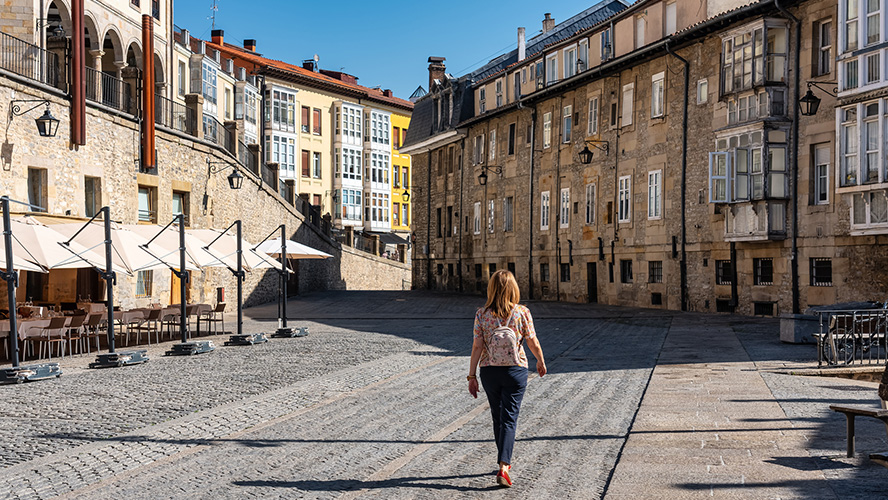
Paseo de la Senda and Ajuria Enea
This is one of the most enjoyable activities available in Vitoria. A walk that starts at the very centre of the city, along a street lined with trees over a century old that provide shade, and great mansions and palaces. It begins at the Parque de la Florida, a green space created early in the nineteenth century with the idea that it would become a French-style botanical garden, and then leads into the Paseo de Fray Francisco de Vitoria, and on to Armentia — a walk of around 3 kilometres.
Among the most outstanding edifices of the Paseo de la Senda are the Zulueta Palace, the Zuloaga and Jaquecas houses, the Armouries Museum, and Villa Sofía.
In addition, since 1980, this has been the site of the official residence of the Lehendakari, the president of the Basque Government: Ajuria Enea. A palace built in 1920 in a neo-Basque style for the industrialist Serafín Ajuria. The outstanding features of this fine building are its beautiful façade and its gardens, as the inside of the building is not open to the general public, thanks to its important institutional role.
Anillo Verde [the Green Belt]
One important reason why Vitoria was declared the European Green Capital in 2012 was the fact that it is virtually surrounded by parks. Collectively, they are known as the Anillo Verde, an umbrella term for the city’s main green spaces. Moreover, all of these spaces are interconnected by eco-recreational corridors.
Thus, the Anillo Verde constitutes a circular route measuring around 33 kilometres, along which people can see (and enjoy) an impressive biodiversity. In fact, it is an area of particular naturalistic value. The richest areas of the Anillo Verde are the wetlands of Salburua and the river Zadorra, both forming part of the Red Natura 2000.
The other parks in the Anillo Verde are Armentia, Olarizu, Alegría, Zabalgana, Errekaleor, and Las Neveras. Together, they provide over 90 kilometres of paths and signposted cycling tracks.
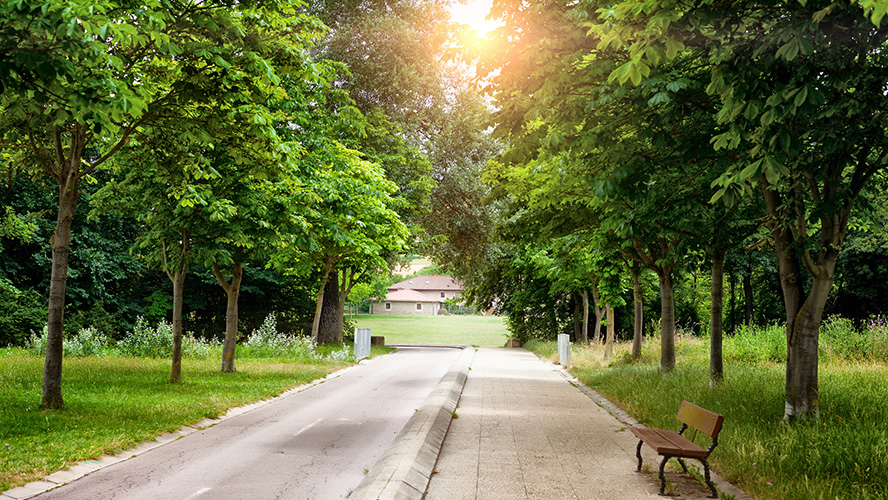
Vitoria’s murals
The capital of the province of Álava is an extraordinary open-air museum with its churches, mansions and palaces from other periods of history, but there’s even more to it than that. The city is also a vast, wholly contemporary canvas which has witnessed, on building façades in the Casco Antiguo and other districts, a growing trend for large-format works by all kinds of artists, from renowned figures in the world of international Street Art to groups of local residents.
The walking trail, Ruta IMVG (Itinerario Muralístico de Vitoria-Gasteiz) also known as La Ciudad Pintada [Painted City], encourages people to tour the city and discover each of these great murals that together make up an amazing urban art gallery. The Plaza de las Burullerías, the Santa Ana neighbourhood, the Jardín de Etxanobe, the Carnicerías district, and the Plaza del Museo Artium are just a few of the key locations on this colourful itinerary that visitors can follow for free — although there are also various options for guided tours that provide a more interesting and contextualised introduction to this form of public and participative, modern artistic expression.
Where to eat in Vitoria
An extraordinary range of dining options, produced from the finest quality ingredients, normally local and seasonal, with an amply proven ability to create from them authentic works of art, from innovative pintxos to the most traditional stews — this, in a nutshell, sums up the Basque Country’s fabulous gastronomy. But everyone knows that no description can even begin to do it justice, and that exploring and enjoying the flavours on offer here is a truly amazing experience.
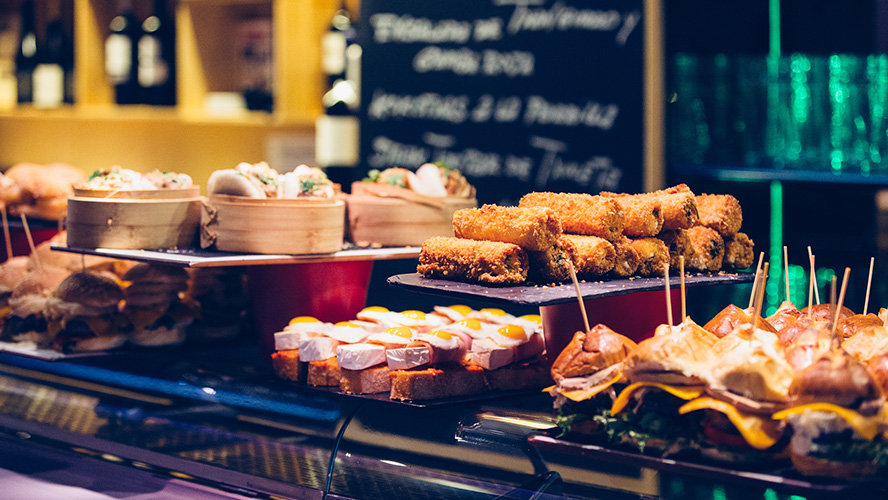
Vitoria-Gasteiz is, of course, an essential destination for lovers of gourmet food and wine. Here, you can try typical perretxikos [a type of wild mushroom], snails, Idiazabal cheese, Añana salt, kidney beans, Rioja Alavesa wines, Álava txakoli wine, and so many other tempting treats that can be found in all kinds of specialist shops, as well as at any number of gastronomic festivals and fairs that are held throughout the year. Gourmet comestibles can also be sourced in places like the Mercado de Abastos [Provisions Market] and, of course, in many, many restaurants, bars, taverns, grill restaurants, cider houses, and so on. Here is just a sample to whet your appetite:
- Zaldiaran. One of the most prestigious restaurants in the city, which has also won an array of awards: haute cuisine without sacrificing tradition. Located in Avenida de Gasteiz, next to the Palacio de Justicia.
- El Chispial. Not far from Zaldiaran, this establishment demonstrates a firm commitment to sustainability in both its menu and its design. Home-cooked food, the smell of the countryside and of fresh ingredients, and attentive service.
- El Clarete. Run by the Fernández de Retana brothers barely a stone’s throw from the Almendra Medieval, this place is a veritable temple to fine ingredients. Signature, cutting-edge cooking, in the best possible way.
- – Located in the heart of the city, a two-minute walk from the Plaza de la Virgen Blanca, this is one of the best pintxo taverns in Vitoria. Don’t leave without trying their famous donut de cocido vasco en dos vuelcos [Basque stew doughnut]!
- Sagartoki. Bar and restaurant; cocktail bar and first-class wine cellar; prize-winning pintxos and chargrilled meats and fish; a place where innovation draws on traditional flavours. Also in the heart of the city.
Of course, you also need to explore the streets of the Almendra Medieval, such as Cuchillería and Correría, in search of the pintxo that will blow your mind. You’re bound to find it!
Museums in Vitoria
Among its many attractions, the city has several museums, each more interesting than the last, both inside and out. Below, you will find a brief summary to help you start organising your next visit:
- BIBAT.- In fact, this is really two museums that share the same space: the magnificent Álava Archaeological Museum, which houses around fifteen hundred pieces from various periods of history, and the Museo Fournier de Naipes [Museum of Playing Cards], which holds the world’s finest collection of playing cards.
- Artium.- The Basque Museum of Contemporary Art, whose permanent collection — considered one of the best in Spain — comprises around 3,000 works. It brings together the creative minds that have written, and are still writing, the history of twentieth and twenty-first-century art in the Basque Country and in Spain, from the early avant-garde artists up to the present.
- Museo de Bellas Artes.- The Museum of Fine Art is housed in the splendid Augustin-Zulueta Palace. It exhibits an extraordinary collection of eighteenth- and nineteenth-century Spanish art, and a unique, specialist archive of Basque art from 1850 to 1950.
- Museo de Ciencias Naturales.-The Natural Sciences Museum is housed in a fortified mansion known as the Torre de Doña Ochanda. It contains items found in Álava’s archaeological excavations of amber from the Lower Cretaceous period, one of the world’s most significant paleontological deposits, as well as pieces linked to minerology, botany and zoology.
- Centro Memorial de las Víctimas del Terrorismo. The main aims of this vitally important museum, located in the former headquarters of the Bank of Spain, are to promote democratic and ethical values, to build a collective memorial to victims of terrorism, and to raise awareness of the need to defend liberty and human rights against terrorism.
The Armoury Museum, the Museum of Sacred Art, the Lantern Museum, the Montehermoso Cultural Centre and even the many sculptures scattered around public areas of the city, including works by renowned artists such as Eduardo Chillida, Casto Solano and Néstor Basterrechea, as well as many others, make Vitoria-Gasteiz a supremely attractive destination for all lovers of art, culture, history, science, and so on.

























































